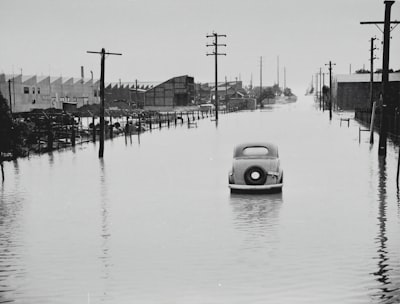|
Any home could flood at any time. However, some homes face significantly higher risks of a flood occurring due to their location in low-lying areas, or their proximity to water.
Unfortunately, the standard homeowners insurance policy will not cover weather-related flood damage (I.e. that from storm surge, flash flooding, sustained rain, river swells). As a result, those who live in flood-prone areas will often face a necessity (and a requirement) to buy flood insurance.
Flood insurance, as provided by the National Flood Insurance Program (NFIP) will provide two critical types of benefits—structure coverage and contents coverage. Structure coverage is, primarily, the most essential of these two types of insurance.
All the same, flood insurance is not unlimited coverage. Therefore, you must review your structure insurance with the help of your agent and determine whether you truly have enough benefits as provided by the NFIP. If not, it might be time to consider upgrading your policy.
The Basics of NFIP Flood Insurance
Water damage is an unbelievably expensive hazard to fix. As a result, flood insurance can be a critical benefit to almost anyone, particularly those who know that they face an elevated flood risk in their homes.
Residents of flood zones designated as high-risk usually must purchase at least their foundational flood insurance through the National Flood Insurance Program (NFIP). The U.S. government’s federally funded insurance pool makes it possible for most Americans to attain flood insurance if they need it. 
Structure Coverage Within NFIP Flood Insurance
Because the NFIP is a government-supported insurance system, it is very tightly regulated, and policies clearly define the benefits provided within your structure coverage. Generally, plans cover several types of structure damage extensively, and parts of the dwelling that will usually be covered include:
- The building and its foundation
- Carpeting, paneling, permanently installed shelving
- Permanently installed appliances like stoves, dishwashers and refrigerators
- HVAC equipment, furnaces, water heaters
If your flood policy’s dwelling insurance does not cover certain damage, then there is a chance that your contents coverage might. For example, while your structure policy might cover appliances like stoves or refrigerators, portable appliances like microwave ovens, washing machines or dryers might have to be covered under your contents coverage.
Additionally, structure insurance does include its limits and conditions on coverage. It is not unlimited, and there will only be so much money you can receive in compensation for a claim. Additionally, your plan will outline only the situations in which you qualify to file a claim.
- NFIP structure coverage pays based on your home’s replacement cost value, which is the value needed to rebuild your home at today’s prices. This is not necessarily the cost you paid for your house, but the cost of construction for the property. The maximum available coverage limit is $250,000.
- NFIP plans include deductibles, which are dollar amounts that are your responsibility to pay for damage costs. So, if you have a $1,000 deductible and $25,000 worth of structure damage, you pay $1,000 for repairs and your insurance pays the remaining $24,000.
- Plans might not cover certain items like outdoor fixtures and landscaping. These items are virtually impossible to protect from flooding.
- Your policy will not cover water damage from slow leaks, normal wear & tear and preventable damage. However, your homeowners insurance policy will cover certain instances of water damage on its own. For example, if a pipe bursts in your home and floods part of the home, then it is your homeowners policy will pay for the damage, with certain conditions attached.
Expanding Upon Your NFIP Coverage with Excess Flood Insurance
The NFIP requires federally insured mortgage lenders to require residents of high-risk flood zones to buy an NFIP policy. Therefore, the NFIP will be the primary provider of flood insurance for most residents of high-risk zones. However, if you live in a high-value home, then you might find the coverage limits of the NFIP plan restrictive.
Your NFIP plan will only provide $250,000 worth of structure coverage, at most. Therefore, if you live in a house that is worth significantly more, then you will often want the benefits provided by excess flood insurance. This policy will work to supplement your NFIP plan and will ensure that you are able to receive a substantial amount of compensation following any flood claim.
If you are unsure about how to design your flood insurance’s structure coverage to your advantage, then just call one of our agents. We understand all the ins and outs of policies in the marketplace, and we are here to help you design your plan in the ways that are best for you.
Posted Monday, August 05 2024 8:00 AM
Tags : flood insurance
|